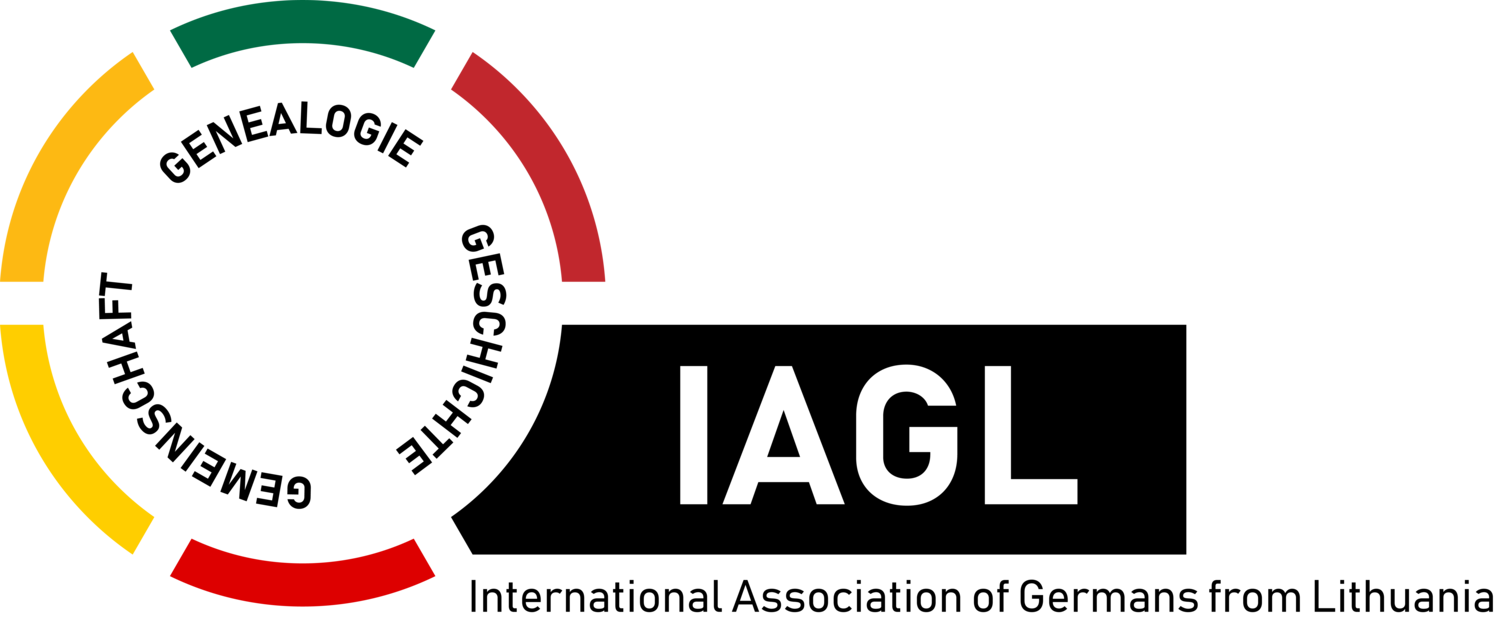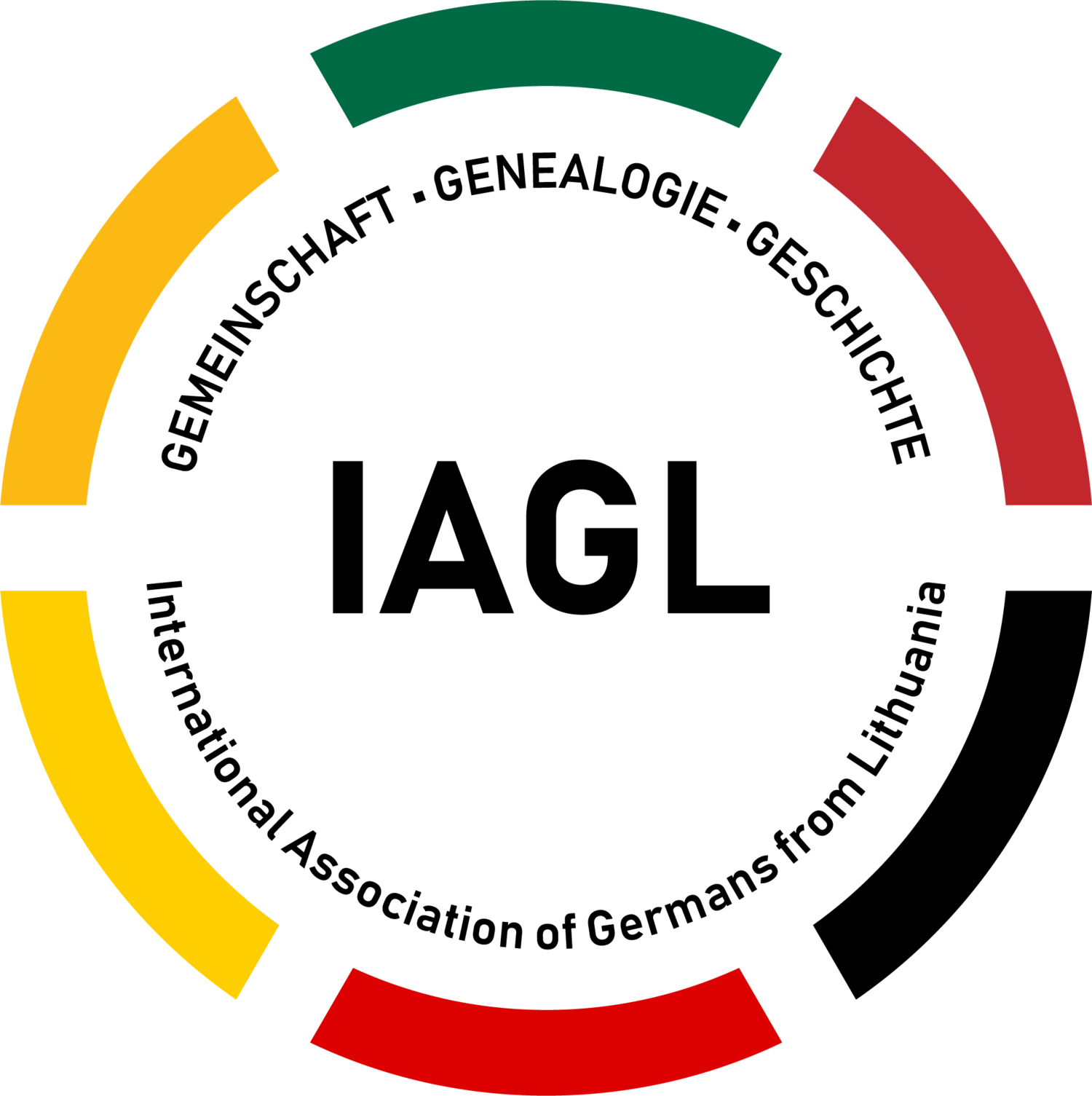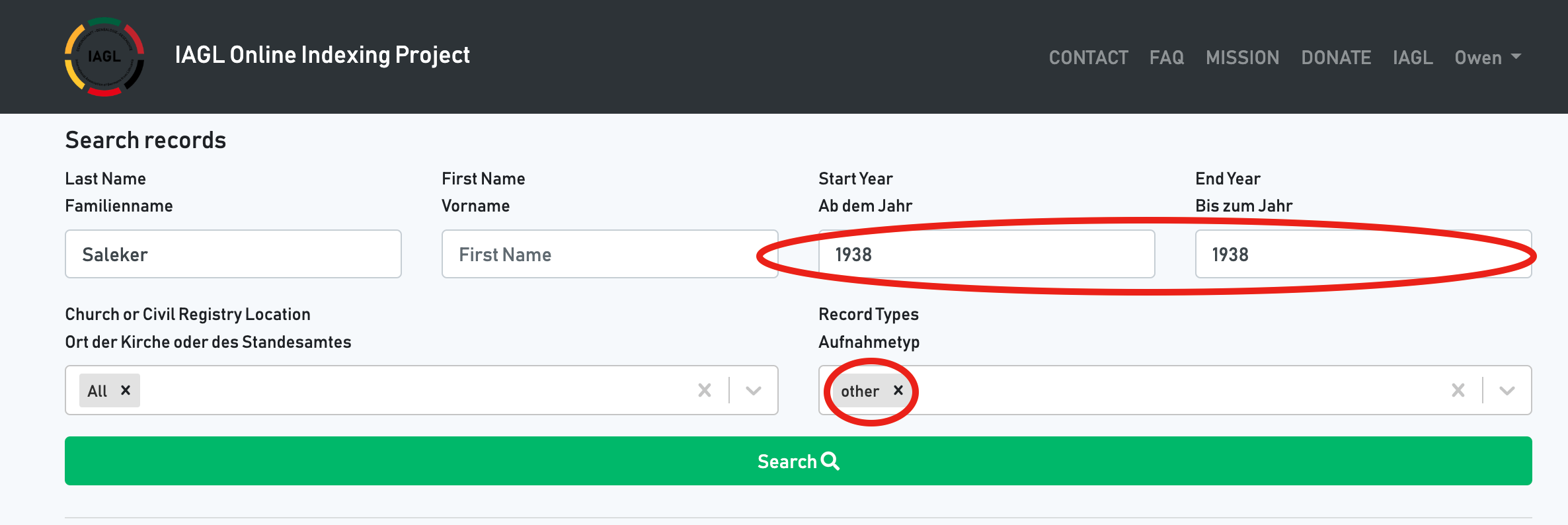1938 Lithuanian Secret Police List Finding Aid
In October 2022, the IAGL added over 2,800 names to our free online database from a very interesting and little-known list created by the Lithuanian Secret Police (known as the Saugumas) in 1938. The list (which we refer to as the 1938 Lithuanian Secret Police List) was created to record the names, locations, and various other details about the German population in Lithuania in 1938–sans the Memelland. The purpose: to determine how many Germans in Lithuania were “loyal” or “disloyal” to the Lithuanian State.
The original list is held in the Lithuanian State Historical Archives and was first transcribed by Klaus Fuchs and published by the Landsmannschaft der Deutschen aus Litauen (defunct) in Germany in 2009.
Brief background on the creation of the list
As Hitler and the Third Reich grew in power, and the threat of war in Europe drew nearer, the Lithuanian government, which had only recently gained its own independence, grew concerned about the German minority in Lithuania. As a result, the Lithuanian government wanted to understand the threat that would exist if those in the German minority were “disloyal” to the Lithuanian state. This suspicion was especially fuelled by the influence of the Kulturverband der Deutschen in Litauen (Cultural Association of Germans in Lithuania), that had been created in the early days of Lithuanian independence to promote and protect the rights of the German minority in Lithuania. By the late 1930s, it was clear that the Kulturverband was under the influence of the Nazi party from Germany which added to the Lithuanian government’s concern that some Germans in Lithuania might be supportive of the Third Reich if Germany turned its sights on Lithuania.
The Lithuanian government decided to send ‘agents’ out to communities that were populated by Germans to ascertain if the individual was “loyal” or “disloyal” to the State, and a report was created for Lithuanian government officials as a result.
Analysis
The analysis of the information about Germans in Lithuania and whether the label of “loyal” or “disloyal” on an individual basis is true or not is left up to the researcher. The publication from 2009 contains some analysis by the author of that publication at that time, and it should be noted that this analysis is the author’s own and does not inherently represent the opinion or analysis of the IAGL on this list. It is important that the reader understand the political climate at the time of the creation of this list and view this information with a critical lens.
Genealogical value
There is no doubt that this 1938 list contains extremely valuable information for the genealogist and family historian. The information is in many ways like a census of the Germans in Lithuania in 1938 since it is organized by location. It can give the researcher important information such as where the individual lived, what they did for work, the extent of that work, or in the cases of farmers, how much land they owned and where that land was. Since the amount of information included for each individual varies, there could be even more detailed information for the researcher.
However, it should be noted that it is impossible to know the completeness of the list as it relates to the actual number of Germans in Lithuania given the complexity of self or government identification of the ethnicity (and indeed the word) “German.” Just because someone is on the list does not always mean the individual was or identified themselves as “German” and the exclusion of a name does not prove that individual wasn’t “German.” The researcher should assume that this list is not a complete and accurate census of all Germans in Lithuania in 1938.
The content of the list.
The lists were organized by “apskritis” (‘municipality’ or ‘county’) or in German “Kreise.” The following is a list of the Kreise and the number of individuals indexed in each that are now in the IAGL online searchable index:
| Kreise | Individuals on the List |
|---|---|
| Mariampol | 297 |
| Schaken | 527 |
| Wilkowischken | 1,435 |
| Seine | 31 |
| Birschen | 1 |
| Geiden | 9 |
| Krottingen | 1 |
| Moscheiken (Frauenburg) | 3 |
| Ponewiesch | 39 |
| Raseiniai | 1 |
| Tauroggen | 482 |
| Telschen | 4 |
| Wilkkomir | 1 |
| Zarasai | 4 |
| Kauen (Kreis und Stadt) | 11 |
| TOTAL | 2,846 |
The numbers per Kreise should be of interest to the reader as it shows the concentration of Germans particularly in the former Suwałki Gubernia (Kreise Mariampol, Schaken, Wilkowischken, and Seine).
For each individual varying levels of information can be included. Besides the first and last name of the individual, there is usually written:
The location where the individual lived, including the house number and street address for those who lived in larger cities.
The individual’s occupation and if the individual owned a business and if they had workers employed how many and if any were German, what their names were.
If the individual owned farmland and to what extent, sometimes including details on any farm or other working buildings.
Various information applicable to the individual’s “loyalty” or “disloyalty” to the Lithuanian state such as:
Membership in the Kulturverband or other German institutions
Whether they speak German
Their political views and/or support for Adolf Hitler (and his policies) specifically
Whether they owe money to German banks or associations in Lithuania or abroad
Whether they travel to Germany frequently
Whether they do business with German firms or operations
Whether the ‘agent’ found them “loyal” or “disloyal” to the Lithuanian state
How to search the list in the IAGL online index
The IAGL has indexed all names included in the 2009 work published by the Landsmannschaft der Deutschen aus Litauen assumed to be a complete reproduction of the original work held in the Lithuanian State Historical archives. Original images of the list are not included and are not in the possession of the IAGL.
Since the list is organized by geographic location (in this case “Kreise”), the lists for locations that are within the scope of the IAGL (i.e., the former Suwałki Gubernia of the Russian Empire) communities in the Kreise of Mariampol, Schaken, Wilkowischken, and Seine are included under those location categories within the IAGL index.
All other Kreise from the list (Birschen, Geiden, Krottingen, Moscheiken (Frauenburg), Ponewiesch, Raseiniai, Tauroggen, Telschen, Wilkkomir, Zarasai, and Kauen) are under the location category “Misc.” in the index as these locations fall outside of the scope of the IAGL efforts.
All of the 1938 Lithuanian Secret Police List records are under the “Other” record category in the IAGL online index. For example,
I entered the surname “Saleker.” Then I entered 1938 as the “Start Year” and the “End Year” since the list only covers the year 1938. Then I changed the “Record Types” option to
“Other” because this is how the list is categorised in the index since it is not a Birth, Marriage, Death or Confirmation record.
The record result of Anna Saleker presents important information.
First is the “Citation” details which confirm that this is indeed a name on the 1938 Lithuanian Secret Police List. Also the citation confirms the Kreis that the name appears on in.. In the “Notes” section at the bottom, is all the content written about the individual. In this case, the information tells us the individual’s name, where they live (Wilkowischken City), information on their property (a house with land at 22 Kauno Street) and their “loyalty” to the Lithuanian State. (This individual is categorized as loyal.)
Original images of the list are not available. Clicking on “View Record Image” will take you to the transcribed list in a document so that you can view the name in its original context.
The original publication text from 2009, including text from the 1938 report, can be viewed on our blog by clicking the button below.





